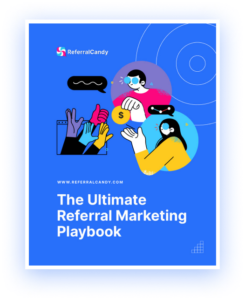33% of customers will choose your competitors over you — if they experience even one instance of bad service.
What makes one business’ service better than the other? How can you create that impression? And what can make the service you render to your target audience irrelevant?
The clear answer is that every business handles different types of customers, each with different needs. And treating everybody the same won’t work.
If you don’t strategically segment your customers and handle them differently there’ll be an issue. And if the problem isn’t fixed quickly even your loyal customers could be lost, as well as, a huge chunk of your profits.
Every one of the customer types that you cater to differs tremendously from the other and this in so many ways.
This is why handling your customers the same way is a recipe for disaster.
It’s a given that customers play a huge role in any company.
But understanding the behavior of your customers will help your business to effectively allocate its resources to the various types of customers to boost your profits.
Also, as you better understand and segment your customers you’ll be able to develop effective business strategies.
So in this article, we are going to have a look at the different types of customers and how to relate with them.
Before that though let’s see an overview of what we’ll be covering:
Click to Jump
What are the 5 Types of Consumers?
There are 5 types of customers that you must identify to create effective strategies that can produce your desired results.
Let’s have a look at them:
- Regular Customers or Loyal Customers: These are responsible for 80% or more of your sales even though they may just represent 20% of your customers.
- Impulse Shoppers: These types of shoppers come into your store randomly and purchase on a whim. They most times don’t have an opinion about your brand but simply saw a product you offer that they like.
- Bargain Hunters/Discount Divers: This segment of customers are frequent patronizers of your business but their decisions are based primarily on your discounts. And they also love to get the cheapest price on everything.
- Wandering Consumers/Window Shoppers/Researchers: These types of customers do not have a purchase goal for visiting your store. They simply want a feel of the experience that you offer. And most times if they’re impressed they’ll return for a purchase.
- Needs-Based Customers: These visit your business because they have a particular need that requires a solution and your product is the answer. Their intention is specific.
1. Regular Customers/Loyal Customers
Your regular or loyal customers are the most valuable customer segment you have.
This is because they contribute the largest percentage of your profits (80% ) as we just saw. And spend more (67%) than new customers.
This means you must give them maximum attention because they hold your business together.
To do so you should consistently interact and communicate with this segment.
Bombas shares their brand story and values with customers so they can create a bond with them.
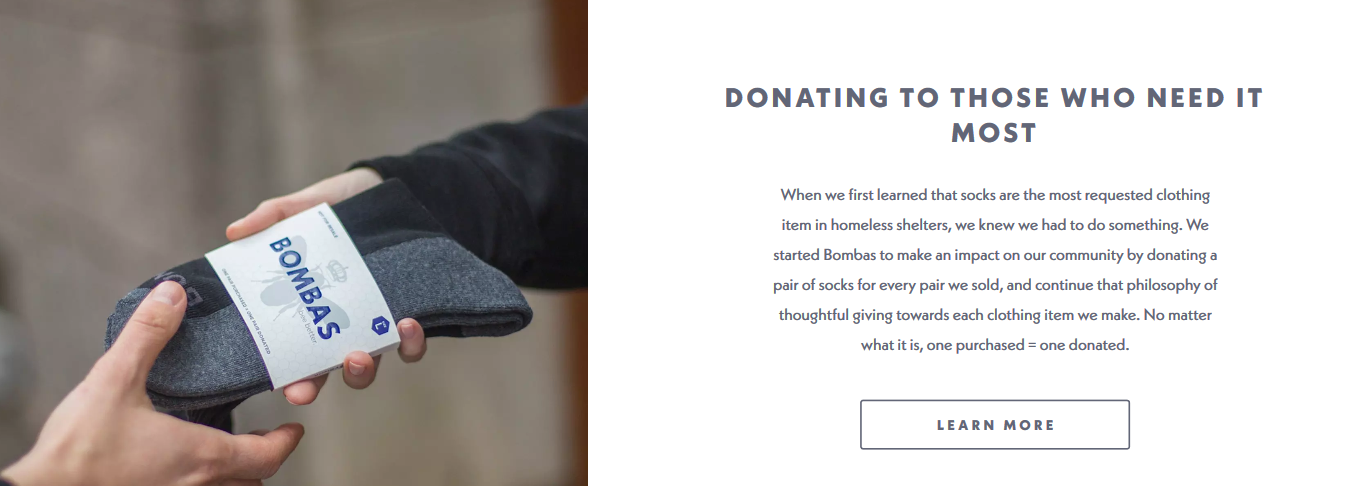
Bombasshares the brand’s corporate value
There are so many ways to do so such as social media, phone calls, emails, user-generated content, live chat, etc.
Your loyal customers should and can influence a large part of your business decisions and perception. So you must communicate and listen to them to know what strategies to take.
Loyal customers, for example, contribute massively to the word-of-mouth marketing process of your business. Both when solicited and unsolicited.
They spread the word about your brand to their circles the more you engage them and show them that they’re valuable to your company.
Most businesses even go the extra mile by creating a loyalty program (more of this in a bit) to reward loyal customers for their consistent patronization of the brand. And as a show of the value, they have for the segment.
2. Impulse Shoppers
Impulse shoppers are an amazing customer segment because they hold a lot of knowledge and insights about your target audience. These types of customers are also the ones you should display your product and offerings to.
They represent customers who are intrigued and pulled in to buy your products but they haven’t made a decision yet. But with the right nudging, these types of customers will usually make a purchase.
However, the major benefit of impulse shoppers is the wealth of insight and knowledge that they reel out when you engage them.
They can tell you what attracted them to your business and product, as well as, what motivated them to make a purchase or not.
In relating with these types of customers your action/engagement must be to serve.
You can do so by offering them recommendations and helping them reach a purchase decision.
Canvas does this by creating evergreen content that educates their customers and helps them reach a purchase decision.
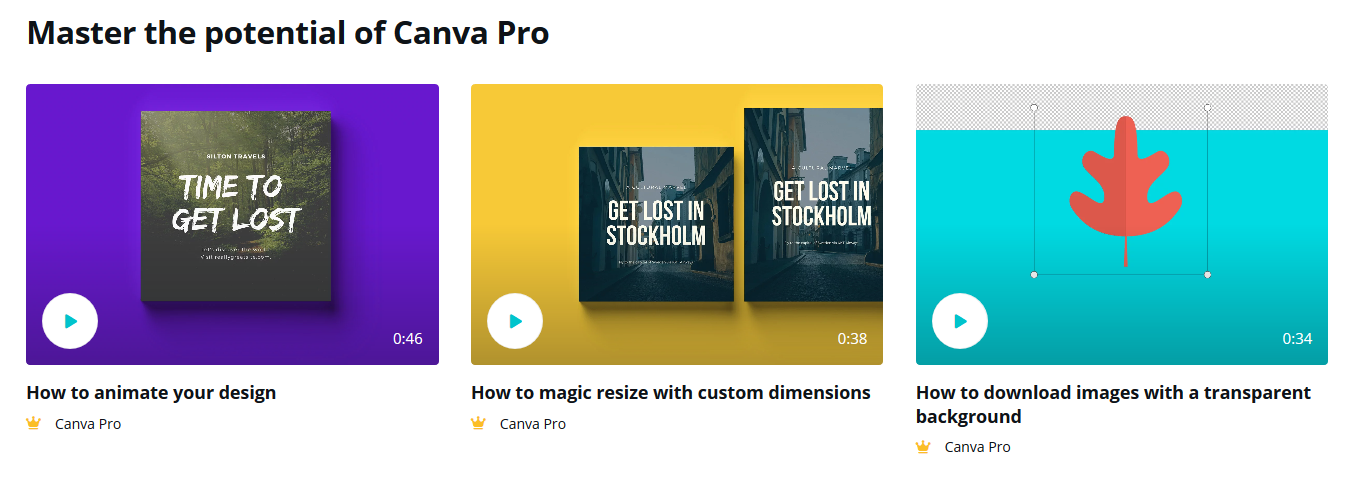
Canvaseducational content
3. Bargain Hunters/Discount Divers
Bargain hunters and discount drivers are customers that love to buy on the markdown.
These customers are great for helping your inventory turnover and facilitating your cash flow.
But beyond this, you must be wary of such customers and tread with caution when dealing with them.
Why? Discount divers and bargain hunters are naturally prone to returning products, as well as being very hard to turn to loyal customers.
This happens because they are not necessarily interested in your brand but simply want a product for a cheap price and your discount offers them that.
Your duty should be to redirect their attention, just like Buffer does with their blog and newsletters that inform customers about the benefits of the brand.
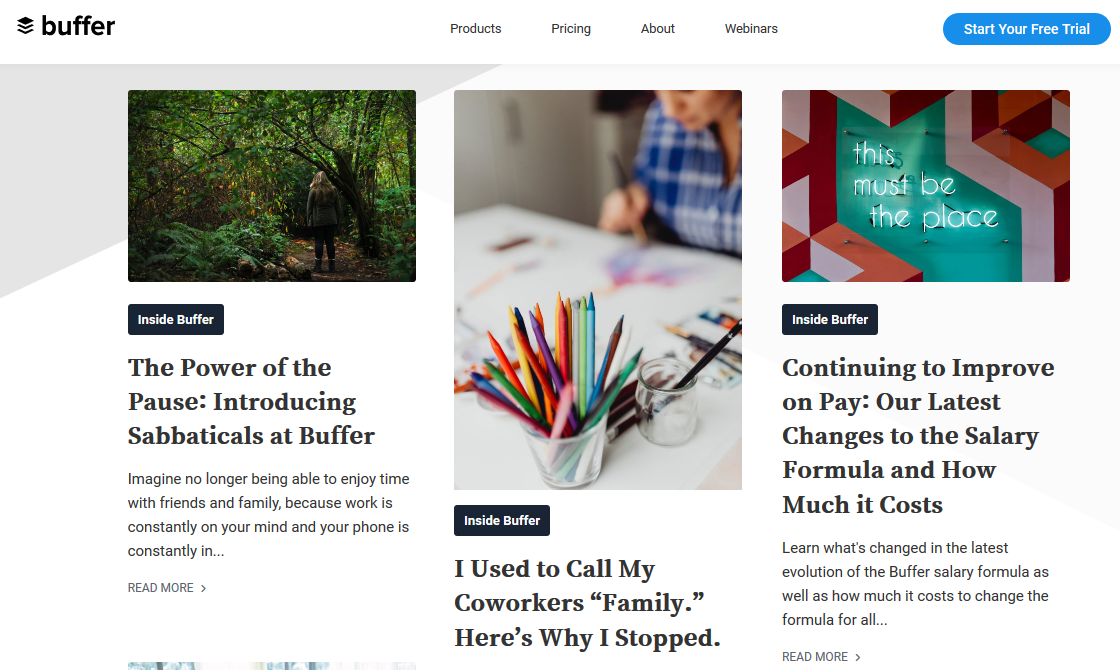
Bufferblog posts
4. Wandering Consumers/Window Shoppers/Researchers
These customers represent the largest percentage of your store traffic but they spend the least.
Why does this happen?
Wandering shoppers visit your store in large numbers simply because of its location.
They are not necessarily there because they love your brand or can’t do without your products. But simply for a feel of the experience you offer and the community interaction.
So you would want to minimize your engagement with these types of customers but ensure that they experience the best you have to offer.
For example, Amazon offers customers suggested products to try to catch their eye – just as you might arrange an attractive display in a shop window.
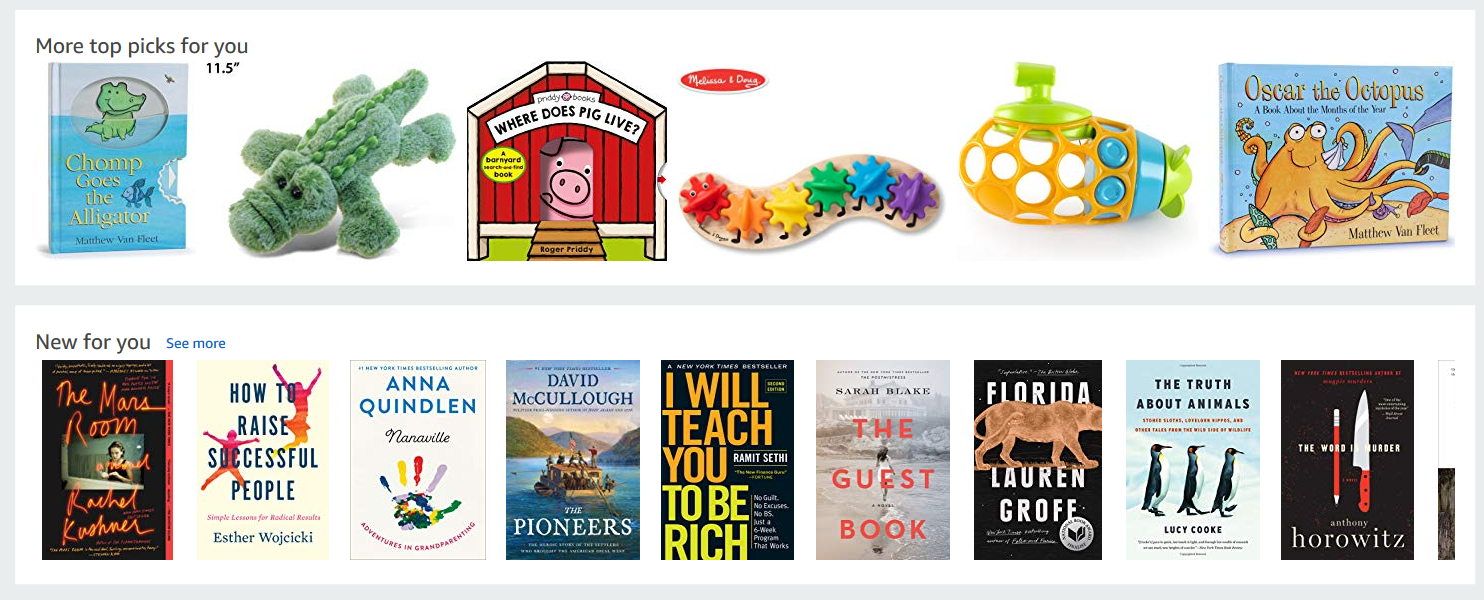
Amazonproduct suggestions
This is because wandering shoppers are there mainly for the experience and if it’s good they will spread the word about it to other consumers. And this will do wonders for your brand’s awareness and perception.
The way to view this customer segment is that they are researchers who visit your store to learn about your offer and the experience you give to inform the larger community about what they experienced.
5. Needs-Based Customers
Consumers in this customer segment walk into a store to purchase a particular product and if it is not available they will leave.
Such people have a specific need that they feel your business should have the solution to. This could be several things; a particular product, a specific price, or an occasion.
Such customers may be tough for your salespeople to handle but with the right personal approach, they may be able to win them over.
The needs segment is also susceptible to being converted by other businesses who offer what they want, how they want it.
But by giving them the right customer service experience you may be able to convert them into loyal customers.
Southwest Airlines for instance uses social media to offer prompt assistance to satisfy customer needs.
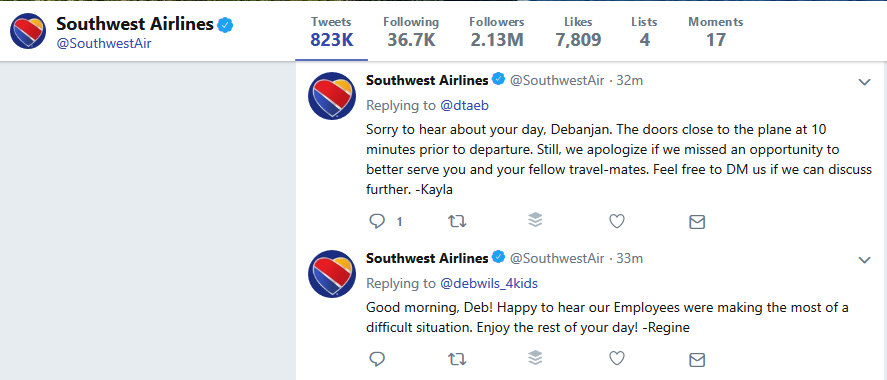
Southwest AirlinesTwitter page customer service
The best way to handle such customers is by attaching top sales personnel to them to listen to their wants and proffer real-time solutions.
The trick is to offer them a level of service that isn’t available with your competitors.
Why is this segment important?
They represent the largest source of your long-term growth, so you would want to cater to them.
Why is Knowing the Type of Customer Important?
Customers are the most important part of a business. The customer is considered the actual CEO in a deal and is the reason for the profits of your organization.
Your customers are the people who use your services and products and judge their quality. So an organization must acquire/retain customers to grow the business.
However, to properly manage customers, approaches like segmentation of customers into types should be followed, as every customer must be considered profitable and valuable.
Though some more than others (regular customers).
The business that seeks to be successful must always focus on regular customers and should multiply its product range to close impulsive customers.
For other customer types, you must innovate and enhance your strategies to turn them into loyal and regular customers.
This is important because one-time shoppers, for example, just want to be a part of a deal (discounts or coupons) and won’t come back.
The goal is to build revenue and one-of customer purchases won’t achieve that.
By creating a sustainable and retainable customer base you can boost your profits at a consistent pace.
Repeat customers are committed and valuable to your brand. So you will want to focus on them.
But there’s no way to identify repeat customers without first understanding the various types of customers that come to your brand.
This is why understanding and segmenting customer types is crucial to your business.
That said, there are various ways you can turn all the types of customers into regular customers but before we see them let’s understand what a regular customer is.
What is a Regular Customer?
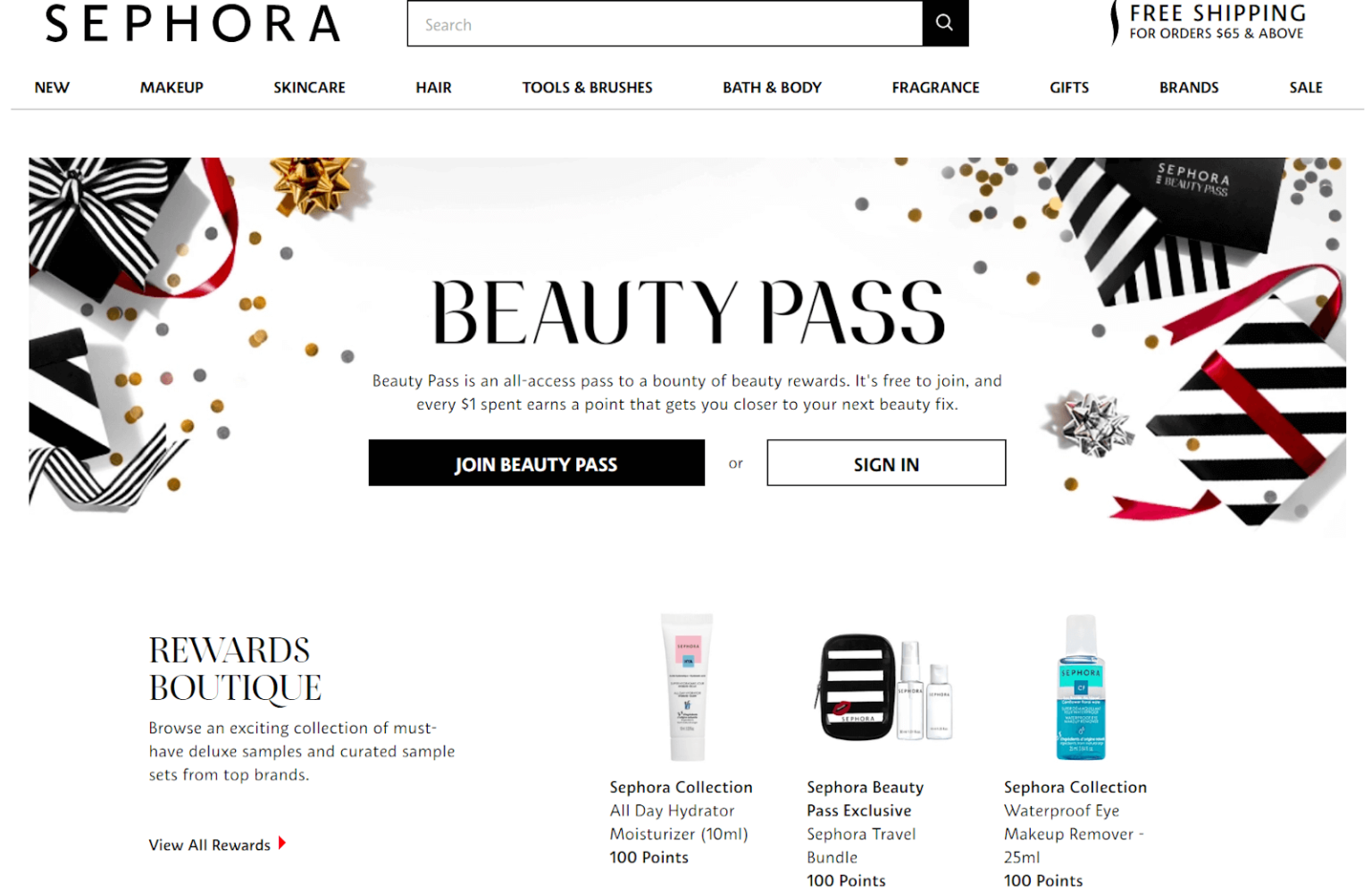
80% of Sephora’s yearly sales stem from regular customers via its loyalty program
A regular customer is one that your services and products come to their mind when they need a product or service in your industry.
Your regular customers have infused your business/brand into their lives. It has become a habit for such individuals to visit your organization.
For example, a regular customer will stop by a coffee shop to pick up a latte every morning before work. Or will visit a Chinese restaurant every Thursday before picking up his daughter from soccer practice.
Humans are creatures of habit and rarely enjoy going out of their comfort zones or daily routines, and as a business, you can capitalize on this to create regular customers.
Why are Regular Customers Valuable?
Regular customers are valuable to business for the following reasons:
1. They Boost Business Growth
Imagine your business is a bucket but there’s a hole under it. And your customers are water being poured into the bucket.
Regardless of the force or quantity of water being poured in, the bucket will eventually get empty.
This is what happens when a brand is void of regular customers. With regular customers, there is no hole in the bucket, and customers that come stay, which means growth for the business. Also, it costs 5× more to convert new customers than to retain existing ones. So how can you grow with just new customers?
2. Regular Customers Increase Profits
If it takes $200 to convert a new customer, they have to spend the same amount for you to break even and more to make a profit.
Regular customers, on the other hand, not only spend more than new customers on your business. They are responsible for 80% of a company’s profits as we’ve seen above. Plus, retaining customers can boost your profits by 25 to 125%.
The above points mean that regular customers are the most valuable customer type for your business.
How Do I Create Regular Customers?
Your first move in creating regular customers is understanding your target audience.
Each brand deals with different/unique demographics.
So you must ask yourself the right questions that enable you to adequately relate with your customer base:
- What are my customers’ wants when they visit my business?
- What age bracket do my customers fit in, middle age, young, or old? How should the answer impact my product and service?
- Do I offer the type of product that my demographic is looking for?
Such questions must be asked by your business to help you know who exactly your customers are.
The moment you have a strong grasp on your business’ demographic, and their needs and desires have been established, then you can zoom in on your regular current customers’ wants.
The easiest way to do this is to look at your current regulars — every brand has at least 1 — to know why they keep returning.
Do they keep coming back because of your business’ aesthetics? The location of your company? Or your great customer service?
Every regular customer won’t have similar reasons for returning and you may discover that they may not even know why they’re coming back.
Some may simply be following the herd. This means that they tag along with colleagues and friends, or their acquaintances recommend your organization.
These are reasons why they may keep returning – even when they haven’t had 100% positive experiences with your brand.
For instance, customers can keep going to a business because their family members have always gone there, or that it is simply the nearest company that offers the product they’re looking for. But if they had another option they’d choose it.
So it isn’t a straight-line process to determine what’s bringing a customer back.
This is why you must be intentional about what creates your regular customers. Don’t leave it to chance.
And to achieve this, you must draw customers in with the customer service experience you offer.
Everyone else can offer the same product you do, but no one can do customer experience the way you do.
A customer who becomes a regular because they love the experience your brand offers them has a stronger reason for patronizing your business than one who keeps returning because there’s no other store around that has the products you sell.
What are Other Names for Regular Customers?
Regular customers can also be called loyal customers, frequent customers, valuable customers, or trustworthy customers.
What Makes Frequent Customers Special?
Frequent customers are special because they consistently choose your brand over your competitors.
This means that they are extremely dependable and loyal to your business.
What is the Difference Between a Regular Customer and a Long-term Customer?
Not every long-term customer that consistently buys your products is loyal to your brand.
There are numerous reasons a customer may keep purchasing from you:
- You are the only low-cost provider.
- It is too expensive or takes too much effort to get a new supplier.
- The customer is used to your product and it’s a hard habit for them to break.
- Your long-term customer may have a relationship with an employee of your business.
- Your business location is convenient for them.
- Your brand is currently the only available option.
The above reasons mean that a long-term customer may only patronize your business because there is no desirable competitor. And when competition comes they may change to them.
On the flip side, a regular or loyal customer believes that your services and products are better than those of your competition.
They are not looking for alternatives, even if the options are available.
How to Convert Customers into Regular Customers?
Not all customer types are valuable. So the goal should be to convert the various customer types into the most valuable one – regular customers. Here’s how to do so for the following types of customers.
1. Emphasise Benefits & Branding – Especially for Discount Shoppers
Discount shoppers have a transactional mindset.
This is the complete opposite of a regular customer that’s interested in creating an emotional bond with your business that goes beyond what they spend.
Because of this, discount shoppers are the least loyal customer type and are less likely to purchase again.
To convert this kind of customer to a regular you need to show them the benefits of your offering.
All you should do is direct their attention to different aspects of the purchase decision.
This is done by emphasizing the benefits of your offering and in so doing you shift their focus from future price comparison or direct pricing to what they can get out of the deal.
The reason this works is that you redirect their focus from what you do in comparison to your competitors and magnify what makes your product unique.
The brand oVertone is a great example of this.
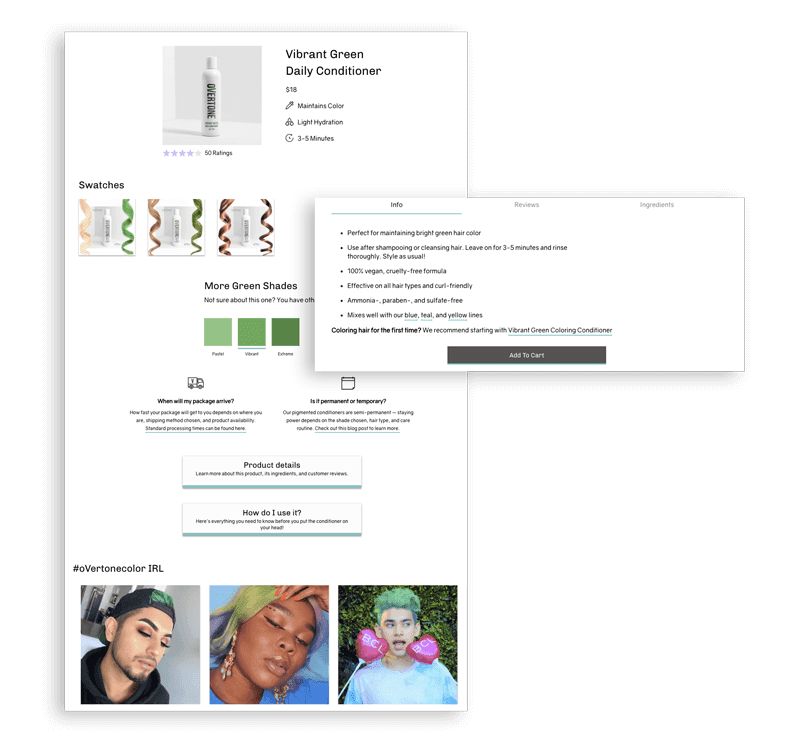
oVertonediscount conditioner benefits
For their color conditioners they focus on what the item offers the customer.
From how fast it begins to work to the level of hydration it provides your hair with.
This is valuable information and amplifies the probability that discount shoppers will notice and understand the pros of purchasing from them than their competitors.
2. Showcase New Products and Offerings – Especially for Impulse Buyers
Impulse buyers are searching for a product that catches their eyes.
They don’t have a particular product in mind when shopping. Rather they buy when the situation feels or looks like a great idea.
Because of this mentality, impulse shoppers are most times obsessed with purchasing the newest or trendiest products.
This type of customer will change a great product with another because it is trendier or new.
What this means is that impulse shoppers are constantly on the lookout for their next purchase.
It also means that they are very easy to upsell to and will be receptive to recommendations.
They love to know about new products from brands that they admire.
To convert them to regular customers you need to keep them informed and interested in your business.
You can achieve this by encouraging impulse shoppers to subscribe to your email newsletter, and follow your social media pages, as well as, constantly updating your product menu for such buyers via personalization.
Take Steelseries for example, they cater to the impulse shoppers by placing hard-to-miss calls-to-actions at the bottom of their website that invites customers to stay connected in-between purchases via the brand’s newsletter or social media.
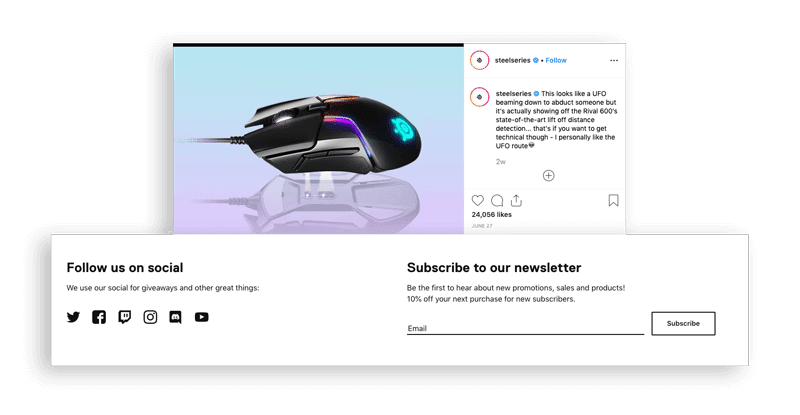
Steelserieshard-to-miss call-to-action
They also have a 10% off for the first purchase, which makes it a lot more appealing for impulse customers.
By maintaining constant communication with impulse shoppers the brand keeps them informed about the latest offers.
This in turn keeps impulse buyers continuously purchasing from the business.
3. Be Proactive about Reaching Out – Especially for Need-based Customers
Need-based customers are motivated to purchase from a store to satisfy a need. And if your business doesn’t have the particular product they want, they’ll move over to a competitor.
So to convert this type of customer you must be proactive about reaching out to them when they come around.
Initiate personal interaction by finding out why they want the product.
One good way to do this is by observing the questions, comments, and reactions they have during your automated webinars. Listening to what they have to say will give you better insight into what’s important for them, and which topics they find hard to grasp. You can use this to fuel your content initiatives, moving forward.
By showing such customers that you’re interested in their needs and are out to fulfill them, you can turn them from a needs-based customer to a regular one.
This happens because you shift their attention from satisfying their needs to your great customer service and willingness to help.
For example, Glow Recipe used this strategy with their Glowpedia beauty tutorial portal that covers everything their products help their customer achieve.
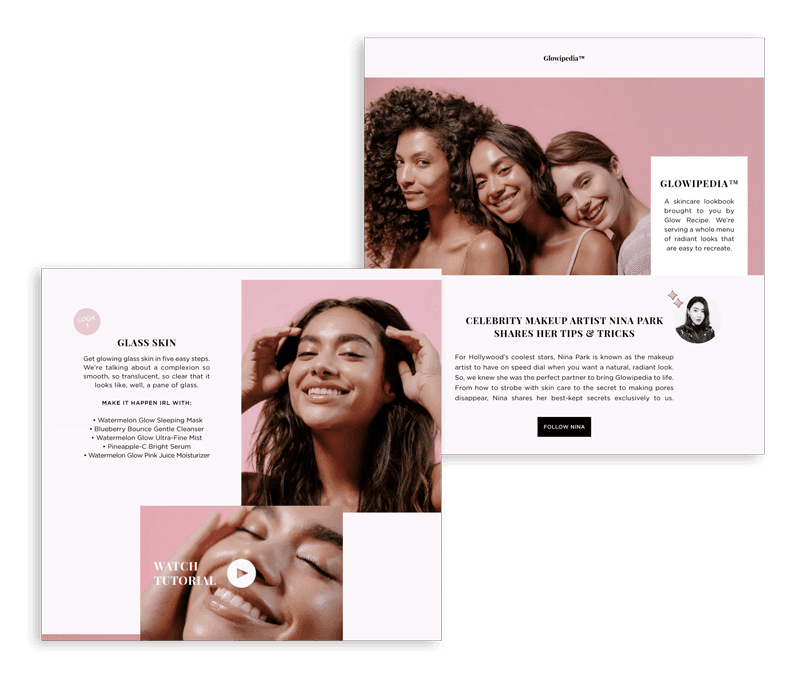
Glow RecipeGlowpedia tutorial
4. Offer a No-brainer Deal – Especially for Window Shoppers
Window shoppers are interested consumers who haven’t yet made up their mind on what product they want to get.
This customer type represents the largest percentage of your business traffic but the lowest in revenue.
While you don’t want to focus on this type of customer, their presence at your business shows that they are at least interested in what you offer.
So to capitalize on this interest you may want to find out why they came around.
Some simply need more information before they purchase and others or are just admiring your offer till they’re able to purchase.
To convert them to regular customers you can offer them samples or free trials of your offer to help them make up their minds.
For example, for restaurants, you can give them a signature deal to help push them to make a decision. Or you could make the checkout process very fast and clear to ensure they’re through with the purchase before changing their minds, just like RIPT Apparel does.
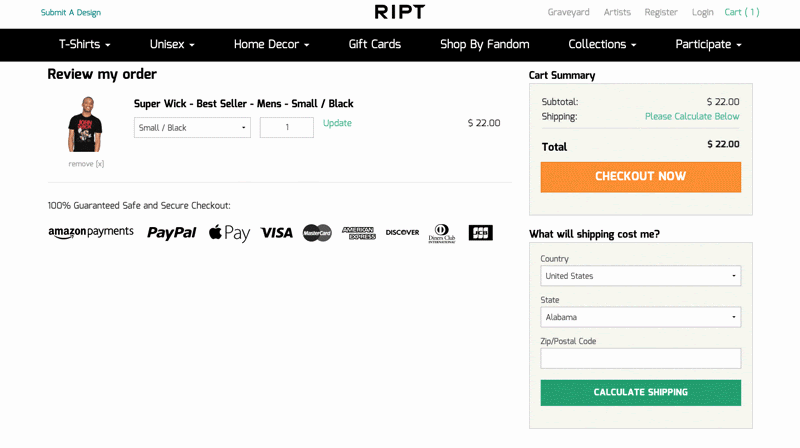
RIPT Apparelquick checkout
This type of customer is undecided and your goal is to help them take action. No matter how small.
5. Use a Loyalty Card/Punch Card to Encourage Repeat Purchase
You must be intentional about maintaining and building loyalty. And using a loyalty/punch card can help you keep your regular customers – regular.
Here’s an example of a punch card from Subway:
Subwayloyalty punch card
Loyalty cards show the customer that their loyalty to your brand is so valuable that it’ll be rewarded.
It also dangles the repeat purchase action before them to always remind them to keep patronizing your business.
That said if you decide to use a paper loyalty/punch card a great idea would be to give out cards with one stamp or punch already issued.
This motivates them to commit to the program. For digital programs, you can get their email addresses to be in constant communication with them and offer specialized deals unique to each customer.
Conclusion
That’s a wrap! Understanding the various customer types you’ll come across when running a business is key to providing quality and relevant service to each customer.
However, your goal should be to convert the various customer types to regular customers, as they are most valuable to your business.
Use the tips listed in this piece to turn the various customer types patronizing your business into loyal customers.
If you’re interested in boosting your word-of-mouth marketing strategy, check out ReferralCandy and InfluencerCandy!


